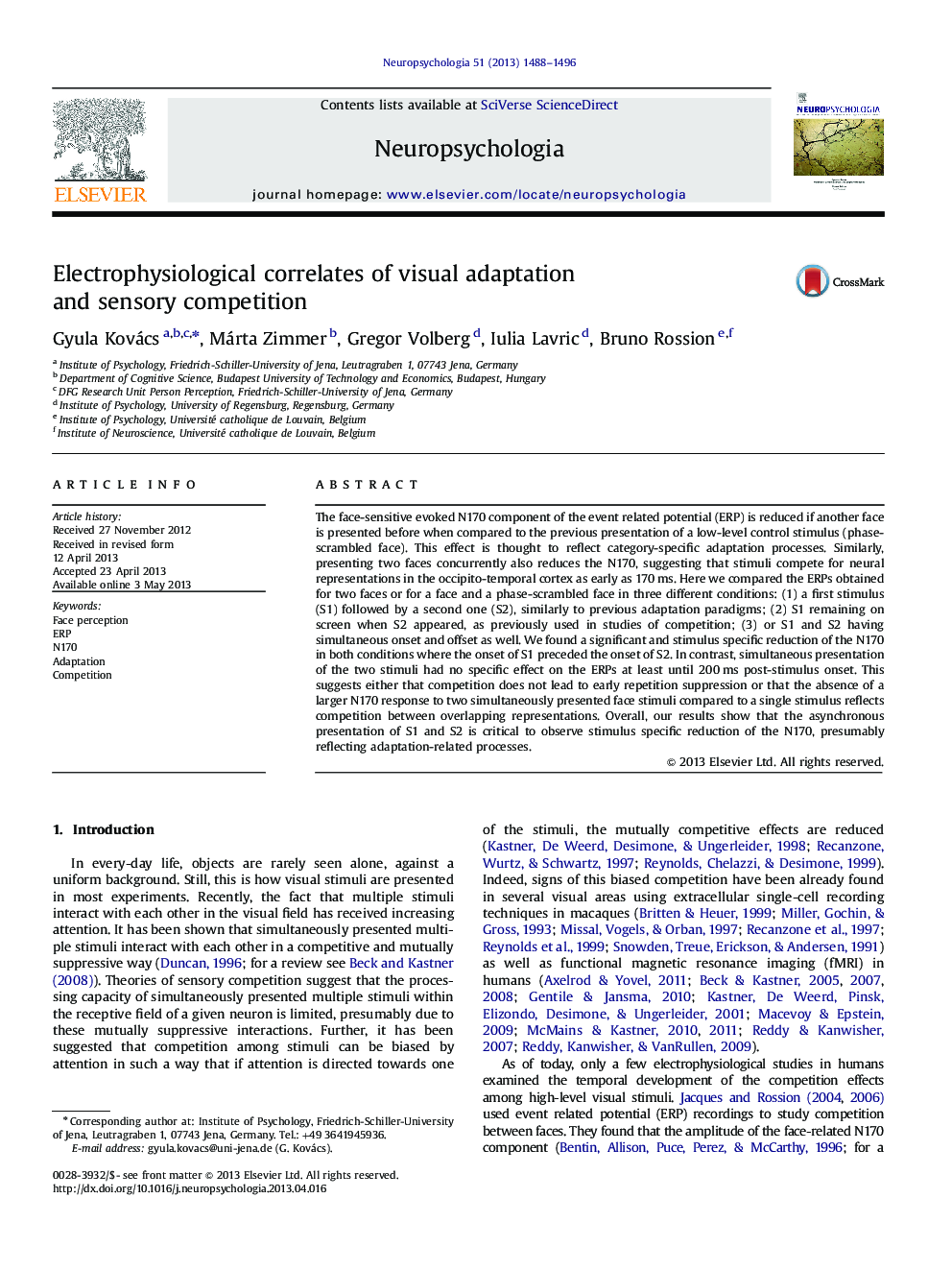| Article ID | Journal | Published Year | Pages | File Type |
|---|---|---|---|---|
| 10464837 | Neuropsychologia | 2013 | 9 Pages |
Abstract
The face-sensitive evoked N170 component of the event related potential (ERP) is reduced if another face is presented before when compared to the previous presentation of a low-level control stimulus (phase-scrambled face). This effect is thought to reflect category-specific adaptation processes. Similarly, presenting two faces concurrently also reduces the N170, suggesting that stimuli compete for neural representations in the occipito-temporal cortex as early as 170Â ms. Here we compared the ERPs obtained for two faces or for a face and a phase-scrambled face in three different conditions: (1) a first stimulus (S1) followed by a second one (S2), similarly to previous adaptation paradigms; (2) S1 remaining on screen when S2 appeared, as previously used in studies of competition; (3) or S1 and S2 having simultaneous onset and offset as well. We found a significant and stimulus specific reduction of the N170 in both conditions where the onset of S1 preceded the onset of S2. In contrast, simultaneous presentation of the two stimuli had no specific effect on the ERPs at least until 200Â ms post-stimulus onset. This suggests either that competition does not lead to early repetition suppression or that the absence of a larger N170 response to two simultaneously presented face stimuli compared to a single stimulus reflects competition between overlapping representations. Overall, our results show that the asynchronous presentation of S1 and S2 is critical to observe stimulus specific reduction of the N170, presumably reflecting adaptation-related processes.
Related Topics
Life Sciences
Neuroscience
Behavioral Neuroscience
Authors
Gyula Kovács, Márta Zimmer, Gregor Volberg, Iulia Lavric, Bruno Rossion,
